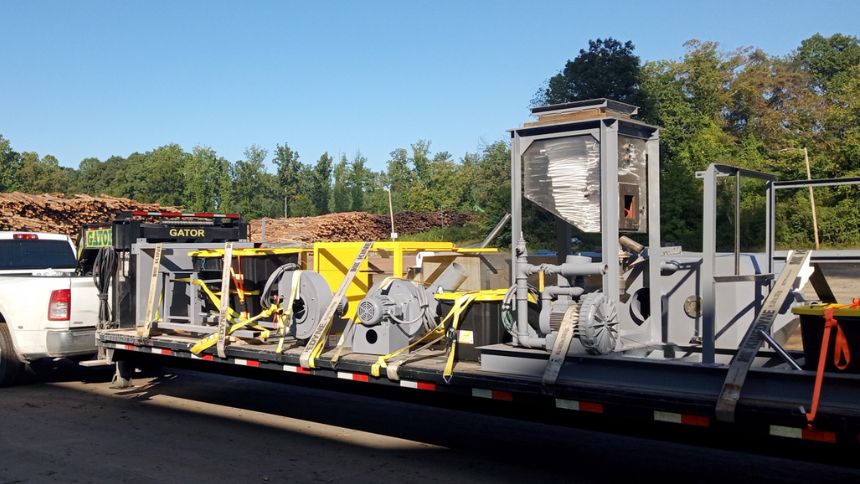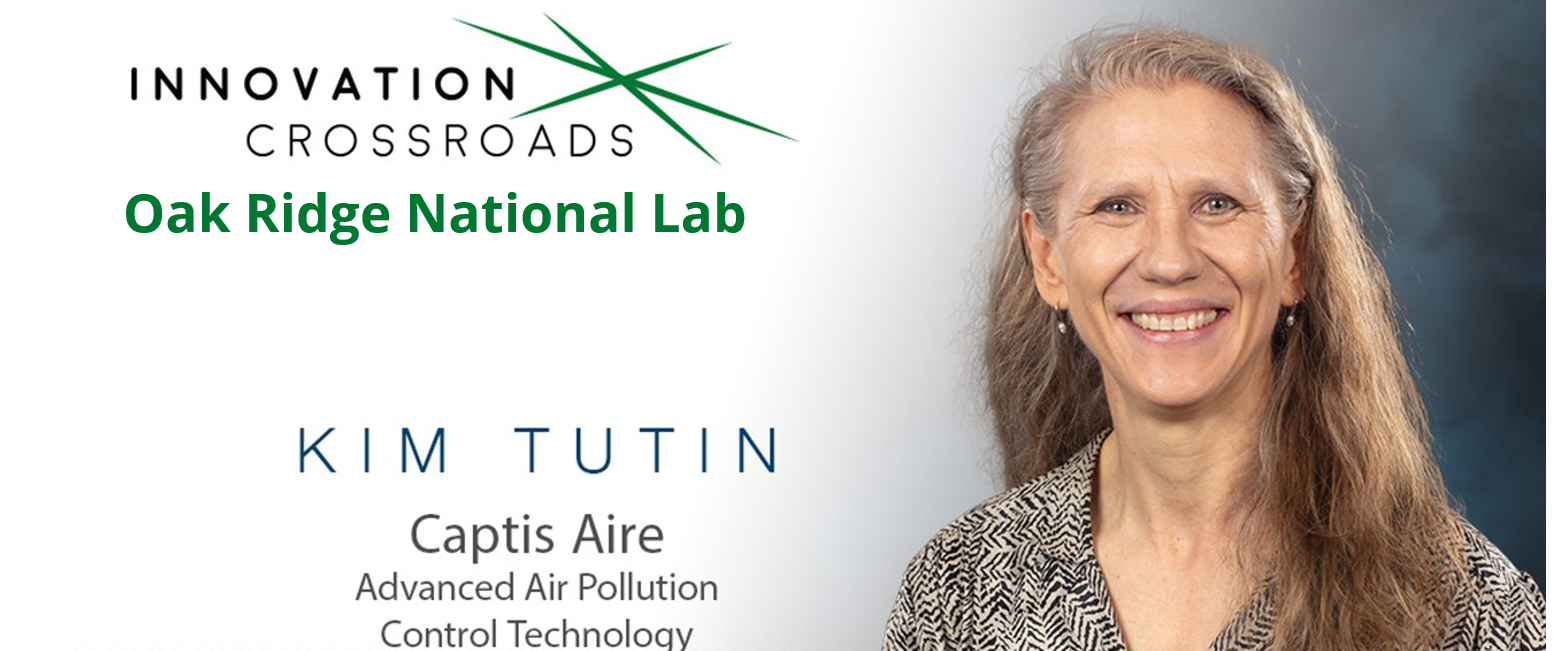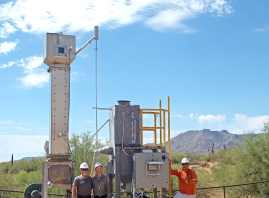
Captis Aire launches two-phase project after securing $2.5 million
Funding includes $2 million from the Department of Energy and $500,000 from Boeing.
One of the first observations we made when we first met Kim Tutin of Captis Aire was that she was not a typical “Innovation Crossroads” Fellow. For starters, unlike many of the Fellows, she had spent more than 34 years at Georgia-Pacific (GP), working as a Chemist, Senior Project Manager, Technology Scout, Scientist, and Group Leader.
Tutin left GP in December 2020 to launch Captis Aire to provide an air pollution control technology that works by capturing (adsorbing) organics rather than using fossil fuel (natural gas) to burn them. When drying green pine wood, the technology captures valuable turpentine. This clean technology could enable wood products manufacturers to (1) significantly reduce energy usage, especially natural gas; (2) generate revenue by selling turpentine and carbon offsets; and (3) improve process sustainability by reducing greenhouse gases.
 Less than two years later, she was accepted as a member of the 2022 cohort.
Less than two years later, she was accepted as a member of the 2022 cohort.
Now, thanks to a $2 million grant from the U.S. Department of Energy and a $500,000 contribution from Boeing, Tutin is well on her way to proving the technology via a pilot unit demonstration at an Oriented Strand Board (OSB) production facility. The equipment was stored and reassembled in Arizona. The Arizona location was ideal, she says, due to the very dry climate which preserved equipment being used even if stored outside without climate control. The equipment has now been delivered to the OSB facility in the Southeast part of the United States.
Tutin said there will be two activities done in parallel – one involving Captis Aire and the other involving Oak Ridge National Laboratory (ORNL), host for “Innovation Crossroads.”
 “We (Captis Aire) moved the equipment to the OSB facility to capture terpenes (turpentine) at the facility using the Chemical Adsorption Innovation that Reduces Emissions (CAIRE™) technology,” she explains. “With this technology, we will capture the terpenes with Bead Activated Carbon in the Fluidized Bed Concentrator. After capturing the terpenes on the Bead Activated Carbon, we will bring the Bead Activated Carbon (containing the captured terpenes) to the lab in Tennessee to get the terpenes out of the Bead Activated Carbon by heating them to release them in vapor form, sending the vapors to a condenser, then condensing the vapors to liquid.”
“We (Captis Aire) moved the equipment to the OSB facility to capture terpenes (turpentine) at the facility using the Chemical Adsorption Innovation that Reduces Emissions (CAIRE™) technology,” she explains. “With this technology, we will capture the terpenes with Bead Activated Carbon in the Fluidized Bed Concentrator. After capturing the terpenes on the Bead Activated Carbon, we will bring the Bead Activated Carbon (containing the captured terpenes) to the lab in Tennessee to get the terpenes out of the Bead Activated Carbon by heating them to release them in vapor form, sending the vapors to a condenser, then condensing the vapors to liquid.”
That will provide liquid terpenes samples for further testing and evaluation. “Most of the ‘capture’ part of the project at the OSB site will be done within first 1.5 years – primarily between now and summer 2025,” Tutin adds.
Concurrent with that work, ORNL researchers Dr. Andrew Sutton and Dr. Lawal Ajibola will develop a procedure at lab scale to convert (upgrade) the raw terpenes (turpentine) feedstock into sustainable aviation fuel (SAF) which is clearly an interest of Boeing.
There are clearly hurdles that the Captis Aire and ORNL teams face. In the OSB facility, Tutin says the start-up must demonstrate the ability to capture terpenes from a commercial wood products manufacturing facility that includes collecting raw liquid terpenes (turpentine), cleaning the air, and demonstrating operational reliability of the capture equipment (the fluidized bed concentrator).
Once demonstrated at pilot scale, that would lead to scaleup and providing the fully functional modular CAIRE™ technology capture systems that can be replicated and installed to displace hundreds to thousands of baseline high heat thermal oxidation systems in a wide variety of applications. These systems could reduce Greenhouse Gases at more than 100 forest products wood products manufacturing sites and at up to 100,000 other sites in the 104 industries subject to the clean air act.
In the case of the ORNL team, it will need to further develop a procedure to convert raw terpenes feedstock into sustainable aviation fuel that can be transferred to a toll manufacturer for scaleup to enable production of millions of gallons of CAIRE™ Terpenes SAF. There’s also the matter of demonstrating the technology is both economically and environmentally advantageous by demonstrating improved Life Cycle Analysis (LCA) and Technoeconomic Analysis (TEA). That work will be done by ORNL’s Dr. Aye Meyer.
If all goes well on both elements, the year 2027 could see two big developments:
- A full-size commercial capture system (the first of four modules) in operation; and
- The start of selling CAIRE™ Terpenes Sustainable Aviation Fuel.
Like what you've read?
Forward to a friend!

